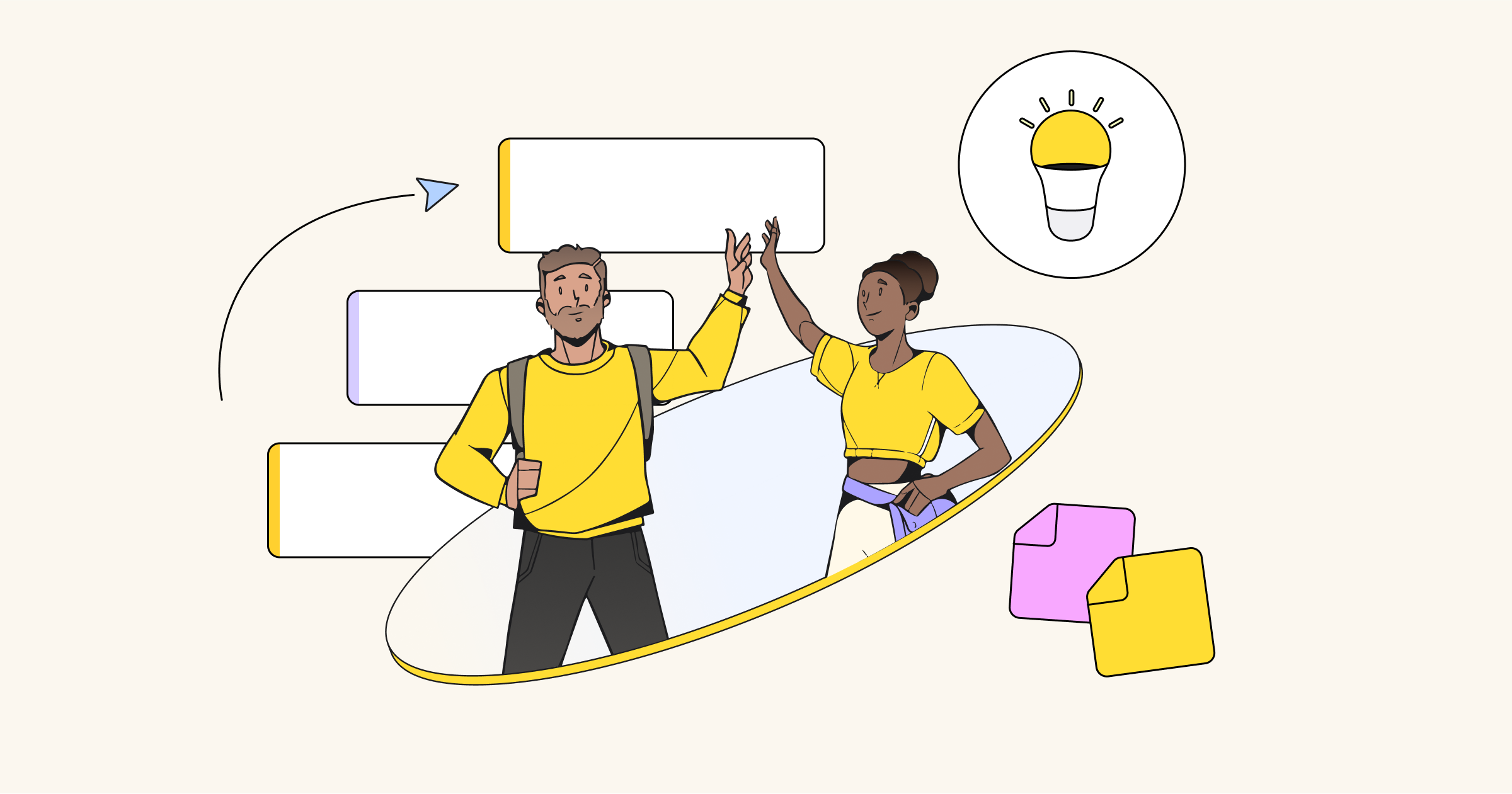The private sector — especially tech — is ripe with the language of innovation, like “agile,” “design thinking,” and “digital transformation.” These terms have traditionally been lacking in sectors deeply entrenched in social issues, like the government, policy, philanthropy and the nonprofit world due to differences in capital flow, bureaucracy, and legacy tech systems. The tide is changing in the public sector, however, as these approaches prove to be an avenue through which to achieve systemic change. Social Finance is one org that’s proving the efficacy of these methods.
As a nonprofit tackling complex social issues, Social Finance learns to work within the constraints of their partners: the government, social services, legal entities, and other nonprofits. Most recently, Social Finance completed the first iteration of their first digital product, Leaving Well. Not only did they have to navigate the challenges that come with working on a tough social issue and with constrained resources, but they also had to learn a whole new set of skills as a team to design and build a digital product.
As the Leaving Well project evolved, Social Finance proved its organizational agility in the way that it adapted to the user community and their needs, experimented with new digital tools — including Miro — to improve their workflow, and internally led iterative operational change in how their team collaborated.
We sat down with Meg Brodie, Product Manager for Leaving Well, to better understand how Social Finance cuts through the challenges facing resource-poor public sectors to motivate change swiftly, creatively and effectively.
Social Finance
is a nonprofit that partners with government, the social sector and strategic partners to find better ways of tackling social problems. Working across a gamut of issue areas from mental health to the criminal justice system, Social Finance works to design, incubate, deliver and scale innovative models for social change . By combining expertise in research, data analysis, finance and service design , Social Finance builds partnerships between government, private investors and philanthropists, and the social sector to improve people’s lives through better public services, a stronger voluntary sector and a clear focus on outcomes.
Staying adaptable with an outcomes-based, human-centered approach
Social Finance works across radically different social issues. When working with this type of breadth, analysts cater their research process to the populations and industries at hand, which means that their approach looks different every time. “We start with a blank sheet of paper and ask, what could we possibly do that is going to have a huge impact in this space?” Brodie says.
This kind of flexibility and reactivity in approach leads to unbiased and creative ways of identifying new social change solutions. They begin their research process with comprehensive research of the problem space and what already exists in terms of support.
“Everything that we’re doing is going towards supporting the whole sector, and not just the interests of our organization,” Brodie notes. Social Finance takes a holistic view on all of the systems in place to understand which levers they should focus on, asking: “What does this whole sector need, and are we doing the thing that we really need to be doing? Are we doing the thing that this sector needs most with the resources and skills that we’ve got?”

What the Leaving Well team quickly realized back in 2014 when the project launched was that at a systems level, there wasn’t enough data on outcomes of young adults once they left care. “The organizations that are looking after young people as they’re leaving care just don’t really know what the outcomes are, or how well they might be doing overall,” Brodie says.
When this data problem was identified as a crucial blocker to progressing toward any sort of solution, Brodie and her team switched gears in the questions they were asking. “We know that you can’t do anything with data until you have it,” Brodie says. Instead of solely thinking about end-user support of young people to leave care well, the team centered their research question around data collection methodology, asking “how can we get more information on young people in real time so that we can respond better to the things that they need?”
As the project’s focus shifted, Brodie and her team reconsidered the best way to collect data within the field from the young adults themselves that were leaving care. “The first thing we tested was, can you sit with a young person and collect data in a natural, normal way that doesn’t feel awkward and weird?”
Her team’s “aha” moment with the user research was identifying the environment that was most comfortable, natural and collected the most informative qualitative data from the young adults: their phones. This is when the idea of the Leaving Well app was born.
How to conduct initial research for a problem space:
- Interview those directly experiencing or supporting the problem
- Identify pain points of those on the ground and those in supportive roles
- Map the entirety of the sector related to the problem
- Identify systemic gaps and pain points
- Identify the unique value your org can bring to fill the gap
Building out a product development function in three months
When Brodie’s team realized that the best way to improve support for young people was through a digital app, they had a new challenge on their hands: product development. As researchers and project managers, her team didn’t have any background in translating research into a designed and deployed product used by the very people they wanted to learn more about.
While Social Finance does have a digital lab arm of the org that focuses on using data for social impact, “Leaving Well is the only one of those projects that have really taken technology at the heart,” Brodie says. “We’ve had to learn user-centred design on the fly starting our journey to becoming a more digitally focused organization. Data is now a huge focus of our work in government.”
[rtb_inline_subscription id=”1″ size=”small” header=”Subscribe to read more about organizational agility” button=”black”]
To help develop the product development function within their org, Social Finance partnered up with Pivotal Act, a program that partners with nonprofits to help them implement product dev and design. “They were very helpful and supporting us to develop the skills that we need in order to redesign the software and make it better and easier and well designed for people to use.”
Read more about the Leaving Well’s Agile method of product development
Changing their operations with a critical eye
While adopting design and development frameworks, the team invested time into researching and learning common frameworks and practices within the tech and corporate worlds, learning about Agile rituals and design-thinking. Their team internally focused on improving their own operations to optimize the ways they were problem solving for Leaving Well.
As they learned about these commonplace frameworks of work in the private sector, their team remained critical in assessing the merits of different approaches typically found in commercial settings. “We’re working on a very nuanced, complex social issue with a very different group of actors,” Brodie says. “Which of these frameworks are actually powerful and useful for us, and how do we adapt those frameworks to be used in this setting?”
We’re being super mindful of intended and unintended consequences of our product and what we’re building.
Meg Brodie, Product Manger at Social Finance

With this critical lens in mind, the Social Finance team is beginning to hire out more user researchers, designers and developers. As they grow and as their product develops, they maintain a close pulse on the ways that their process and product could positively or negatively impact children leaving care.
“We’re being super mindful of intended and unintended consequences of our product and what we’re building,” Brodie says. “We’re also doing some speculative designs, thinking about our broader impact that we might have in five years and working back from that.”
Collaborating with stakeholders in person and remotely
The Leaving Well team frequently traveled by train to different councils and government stakeholders to collect and present data. “We were doing all of this work with post-it notes and whiteboards, but we spent a lot of time out of the office and a lot of time on trains to and from Doncaster or Bradford.”
Looking for an easier way to brainstorm while in-transit to collaborate with stakeholders, a team member discovered Miro. “We very quickly saw the benefit of it,” Brodie says. On the go, they were able to conduct sticky-note brainstorms, consolidate user research notes and prepare presentations — all from the train. “We used Miro for getting together, getting ideas on a virtual page, and moving them around in a way that’s really visual and that people understand and everyone can engage with.”
Try out ideation and brainstorming in Miro, free. Sign up

Brodie also found Miro helpful for real-time collaboration in person and synthesizing insights from research notes. “Miro’s a tool that enables a way of thinking and a way of presenting your process and output internally.”
Working with so many stakeholders, Miro also serves as a general internal and external collaboration tool to keep everyone on the same page, and identify predominant themes and insights from large-scale collaborations. “Miro produces an artifact that we can then go back to and see the process that we’ve thought through,” Brodie says.
Features the Social Finance team uses in Miro:
- Mind mapping
- User research
- Sticky note brainstorms
- Team Retrospectives
- Internal presentations
- Design-thinking exercises
- Sector and stakeholder mapping
Pushing the envelope in a change-resistant sector
Key challenges in the public sector vs. the private sector
The primary difference between the social and private sectors tends to be where capital lies and who the end user is. In the for-profit world, the consumer is also the source of financial capital.
In the social sector, these two things are dissociated: the source of capital is not the same as the end user. Therefore, funding must be allocated based on impact, and measuring the ROI of social impact work is difficult. This capital-constrained system with third-party donors makes being open and adaptable to change and risk less common than in the private sector.
To mitigate such risk, Social Finance pioneered the financial model of social impact bonds that underpins their approach as a nonprofit. Through leveraging third-party investors, the private sector can invest in preventative and innovative services, and the public sector only repays the loan if positive improvement and social change is proven.
Social Finance usually works directly with the government and social sector to reform social programs financially supported by those sectors. As an organization that embodies risk-taking, open-ended questions, experimental methods and operational agility, working within large, bureaucratic systems with legacy tools can add to the challenge of motivating social change. The Leaving Well team frequently rubbed up against different modes of operating, types of tools and tech used, and timelines of change with their stakeholders.
“As a team, we talk and behave and look more like a digital agency,” Brodie says. “If we go and use that language with the local authority, or someone who isn’t in technology, it literally makes no sense. We need to be very aware of how people expect us to talk, and also the language that makes sense to them.”
Brodie identifies that within the public sector, adopting new technologies or processes that could improve efficiency doesn’t always happen because of lack of time and resources to teach and learn new skills or develop new systems. “To invest in a new kind of technology, a new tool, or a new thing – there’s the upfront cost of it. That means to even try it out, it feels a bit scary and hard. That attitude of taking a risk and spending some money on something just isn’t really an option for some organizations.”
The Leaving Well team specifically had to work alongside case workers supporting young adults that were in active crisis leaving care. While the case workers often were limited in bandwidth to start using new tools given the immediacy of their work with young adults, they were enthusiastic and receptive to the partnership with Social Finance to improve the methods by which they interact with young adults. “Even if those systems and tools will save you time in the future, just having the mental space to be able to learn and adapt is actually really hard, especially for frontline workers.”
While Social Finance works to prove cost-saving and efficient methods for the public and social sectors to invest in for greater social impact returns, disrupting this landscape can still be difficult. “They’re stuck with these legacy systems because they’re so embedded in all of their processes, so it’s actually really difficult to move away from that when it’s so ingrained.”
Despite these challenges in accommodating public sector operations, tech systems, lack of funding and time demands, Social Finance does what it can to introduce new ways of operating in their collaborative partnerships. For example, they have introduced interactive and inclusive exercises like retros and workshops when meeting with local authorities as alternatives to the typical formats they are used to.
“We’re starting to be like, ‘I know you’re expecting a slide deck, but actually, that’s not the most effective way to communicate what we want to communicate,’” Brodie explains. “We’re both code-switching and translating, but also challenging where we think we can get our message across in a more efficient or interesting or engaging way other than what they might expect.”
Where they are now
They now have the first pilot active in seven different authorities. The Leaving Well team continues to nurture relationships with social services, nonprofits, government authorities, and policy makers in leveraging the data that’s produced from their app.
“Our approach so far has been asking ourselves how we can create a useful tool for young people and their workers that also collects data.” Brodie says. “Once you’ve ticked that box, we’ll move on to the next stage of: How can we really make this data work for the people who need to make decisions based on that information?”
As the digital tool evolves with time, so too does the relationship that Social Finance builds with local authorities in how they collaborate. “We’ve completely changed how we talk about the product and how we work with them,” Brodie says. As Social Finance solicits feedback, presents updates, and gathers data with local authorities, they are discovering more effective ways to align with their public sector clients’ non-agile norms of work.
The Leaving Well project has also been transformational for Social Finance’s internal dynamic. Of the 80-person organization, Brodie is currently the only Product Manager on the team. Senior level employees have also begun talking about conducting and learning about the design process, enabling agile teams, and defining how these terms apply to their org’s practice.
“We think we’re at a point where we’re quite good at trying out new things,” Brodie says. “It’s also interesting in an organization where there are so many different teams doing really different things who all need different tools. It’s a process of change and adapting.”
How Social Finance collaborates with clients
Part of nurturing this relationship with the public sector has been testing various formats of collaboration to improve feedback, process efficiency and communication. “It’s been a lot of trial and error,” Brodie says. They use a diversity of collaborative formats, including:
- Presentations
- Workshops
- One-on-one interviews
- Prototypes
- Meetups for champions of the product




